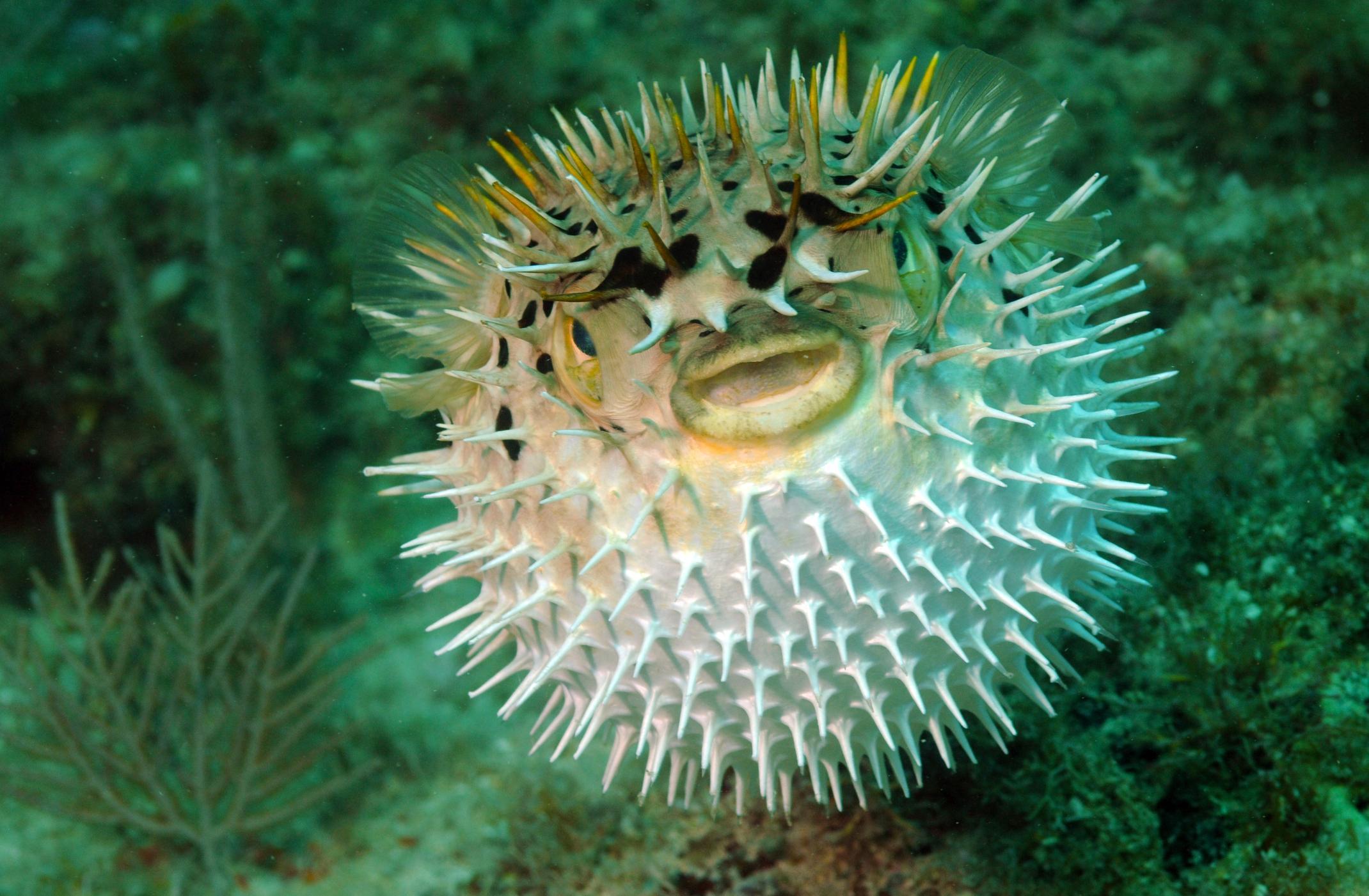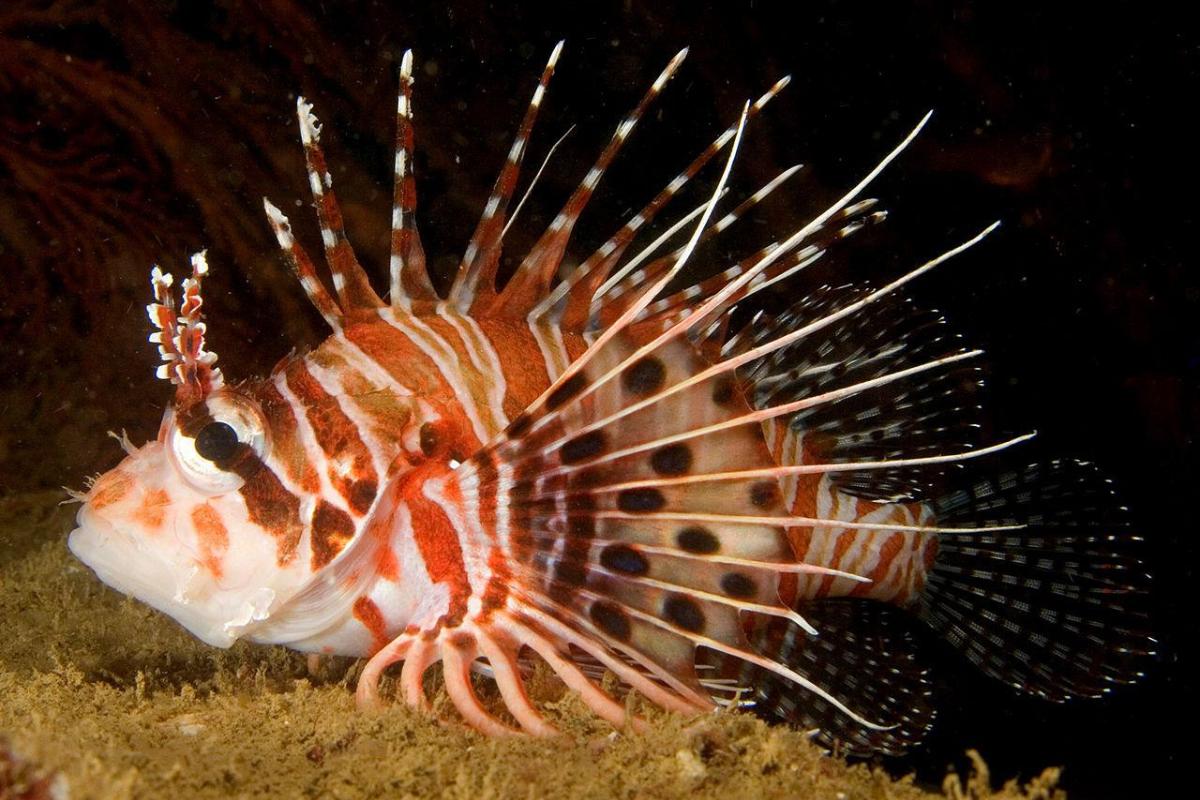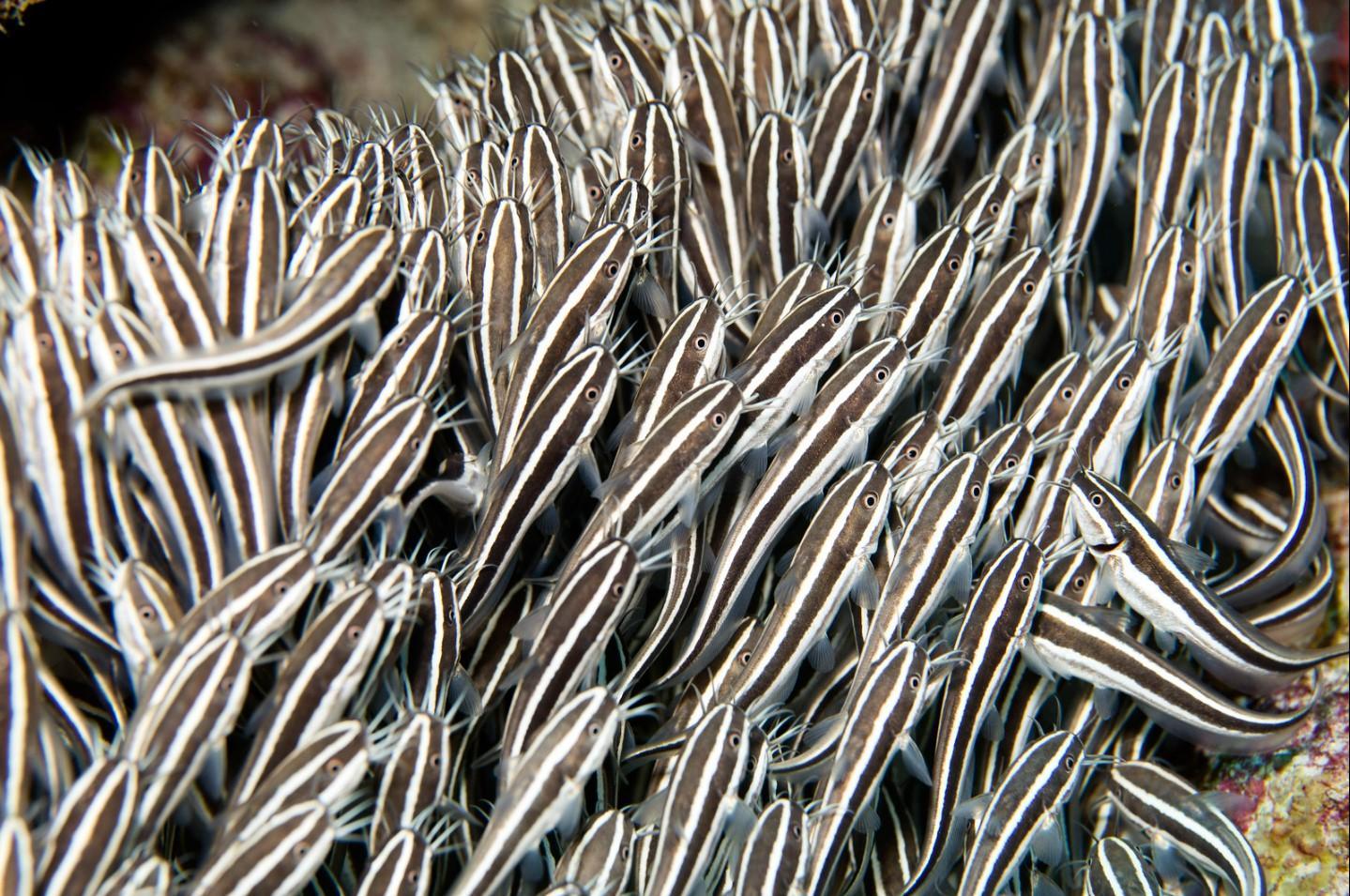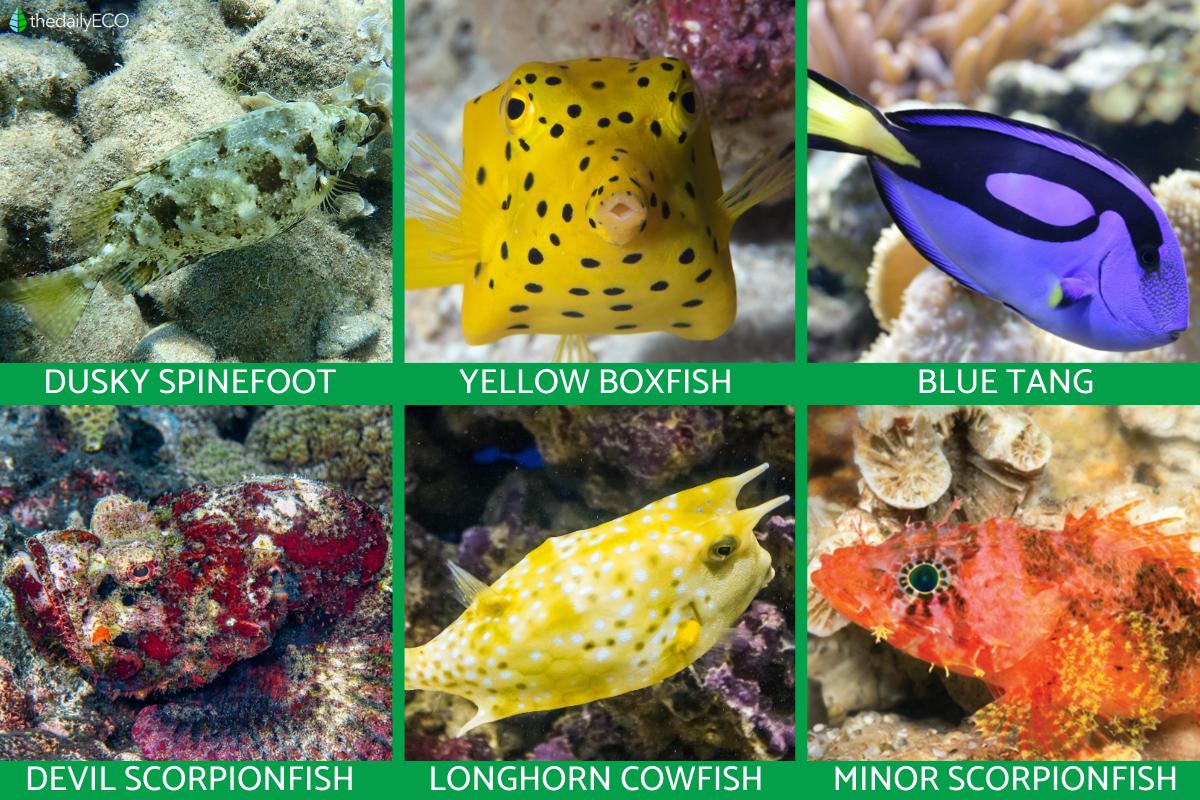The Most Venomous Fish Types


The most venomous fish in the world are mostly from marine environments, although we cannot forget freshwater venomous fish such as catfish. The most deadly are certainly those found in saltwater environments. Many of us may associate venom with terrestrial animals such as snakes or spiders. In actuality, there are more types of venomous fish than there are other poisonous vertebrates combined. Many poisonous fish display aposematism, meaning they use bright colors and other signals to warn potential predators to stay away. You can see this trait for yourself in our photos of the 12 most venomous fish types from thedailyECO.
Stonefish (Synanceia sp.)
The first species on our list of the most venomous fish types is the stonefish. This is not one fish, but a range of species from the genus Synanceia. Their common name comes from the fact they resemble the stones and rocks that an be found on the seafloor. They use this appearance to their advantage by hiding among these rocks and surprising potential prey.
The danger of stonefish is due to the fact they have poisonous glands attached to dorsal, anal and pelvic spines. By introducing the thorns into their prey, the venom is injected generating deep pain and neurotoxic effects. This can cause shock, paralysis and tissue death. If not treated immediately, it could be fatal to humans.
Stonefish are important from an evolutionary perspective. According to research, they are the type of venomous fish which has evolved the ability to envenomate more than any other[1].

Pufferfish (family Tetraodontidae)
There are more than 120 species of puffer fish, all of which are in the family Tetraodontidae. When a pufferfish is in danger it is capable of swallowing water and swelling up, the ability from which their common name is derived. They do so to expose the sharp sines which appear over their body and deter potential predators. This can be seen in the photo below where the pufferfish is inflated.
It is not technically correct to call a pufferfish a type of venomous fish. They are actually a type of poisonous fish. Although they have spines, these are not attached to venom glands. The poison is a neurotoxin known as tetrodotoxin which is contained in the gonads, liver and intestine of pufferfish. It acts as a deterrent since any animal that east a pufferfish will also ingest the toxin and most likely die.
If a human ingests the poison from pufferfish, the victim will suffer muscular paralysis that ends in cardiac arrest. Symptoms appear within 10 minutes to 3 hours, and a single puffer fish could kill up to 30 humans.
A very surprising fact is that dolphins seem to not only tolerate the toxins of pufferfish, but it appears they enjoy it. Learn more with our article on whether dolphins are getting high on puffer fish.

Common stingray (Dasyatis pastinaca)
The common stingray has a very different body shape to the other venomous fish types here. It has two pectoral fins that are joined to form a disc-shaped and flat body. They are usually found moving on the sandy bottom of the seabed, as depicted in the photo below. In place of a caudal fin, the stingray has a tail which is the same length as their body. There is a lance-shaped stinger known as a spinal blade that can be up to 16" (40 cm) long.
The stinger is attached to venom glands that flow venom into the end. When prey is stung, the blade produces deep wounds, tears and injects venom. Being on the seabed, people often step on them accidentally. The poison can cause pain, necrosis, nausea, respiratory and circulatory problems. It is rarely lethal unless the person is pierced somewhere vulnerable.

Spotfin lionfish (Pterois antennata)
The ornamental appearance of the lionfish shown in the photo below is beautiful, but it is also a clear warning of danger. Although they have many different names, this species is most known for their long spines which deliver their venom. These spines are located on the dorsal, pelvic and anal areas.
Lionfish venom is not usually fatal to humans, but it does cause immense pain, nausea and respiratory problems. The amount of venom that the lionfish injects will depend on the aggressiveness of its attack. The stronger it is or the longer it stays injecting it, the more severe the symptoms will be.
Learn more about this species of venomous fish with our article on lionfish as an invasive species.

Weevers (family Trachinidae)
Weeverfish, commonly known as weevers are form the family Trachinidae. As with stonefish and lionfish, the weever has spines with attached venom glands. Unlike these other types of the most venomous fish, weevers only have venomous spines on the dorsal fin and on the operculum. The latter is part of the protective covering of their gills.
Like most venomous fish, the toxin is used as a defense mechanism against possible predators. Attacks on humans are usually accidental. Not all species are likely to envenomate since they live in deeper waters. Weever species that live in shallow waters most often sting people because they are trodden on. The sting of weevers can be very painful, but the pain usually goes away within 24 hours, even without treatment. Fatalities from weever venom are very rare.

Striped ell catfish (Plotosus lineatus)
So called due to their eel-like appearance and whisker-like sensory appendages on their face. They are also noted for the white stripes which can be seen in the photo below. It has two dorsal fins, the first of which has a spiny radius where the venom glands open. These are also found on the pectoral glands. In total there are 3 poisonous spines, but they cannot be seen with the naked eye since they are hidden under the integument.
Their injuries cause severe pain. Although they are not likely to attack, they could cause the death of a person who tries to capture them. Unlike the other fish on this

other poisonous fish
We have described the 6 most venomous fish types that exist, but there are almost 3,000 venomous fish in the world's waters. We cannot list all of them here, but we provide another of the 6 most venomous fish species below:
- Dusky spinefoot (Siganus luridus)
- Yellow boxfish (Ostracion cubicus)
- Blue tang (Paracanthurus hepatus)
- Devil scorpionfish (Scorpaenopsis diabolus)
- Longhorn cowfish (Lactoria cornuta)
- Minor scorpionfish (Scorpaenodes minor)
Now that you have discovered all these species of venomous fish, you can learn more about their habitats with our article on the types of aquatic ecosystems.

If you want to read similar articles to The Most Venomous Fish Types, we recommend you visit our Biology category.
1. Smith, W. L., Stern, J. H., Girard, M. G., & Davis, M. P. (2016). Evolution of Venomous Cartilaginous and Ray-Finned Fishes. Integrative and comparative biology, 56(5), 950–961.
https://doi.org/10.1093/icb/icw070
- Cortazares, J. F., & Calderón-Campos, R. (2010). Sting by Rock Fish. Retrieved from: https://www.medigraphic.com/pdfs/bolclinhosinfson/bis-2010/bis101q.pdf
- Cortazares, J. F., Calderón-Campos, R., & Seijo Moreno, J. L. (2008). Lionfish Sting Envenomation . Retrieved from: https://www.medigraphic.com/pdfs/bolclinhosinfson/bis-2008/bis082h.pdf
- CCortazares, J. F., Calderón-Campos, R., & Seijo Moreno, J. L. (2009). Blowfish Poisoning . Retrieved from: https://www.medigraphic.com/pdfs/bolclinhosinfson/bis-2009/bis091f.pdf
- Lemus Reyes J. N., & Boada Fernández del Campo C. (2001). The bite of the spider fish. Retrieved from: https://scielo.isciii.es/scielo.php?pid=S1131-57682001000600006&script=sci_arttext&tlng=en












